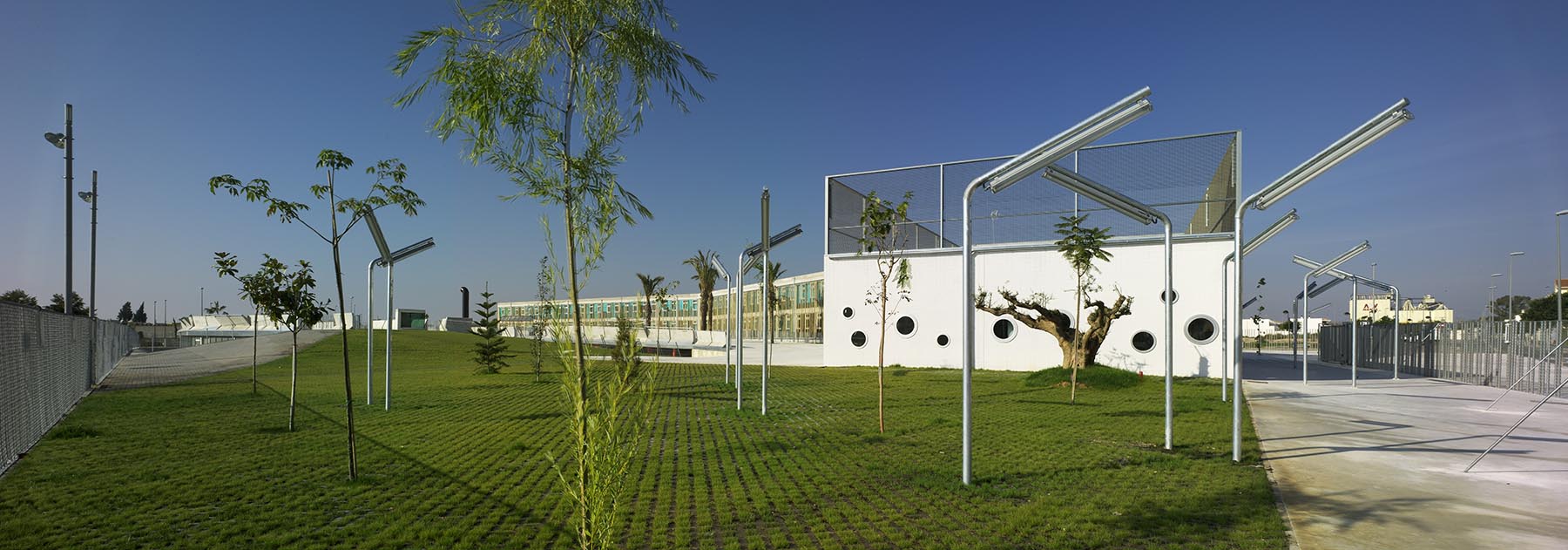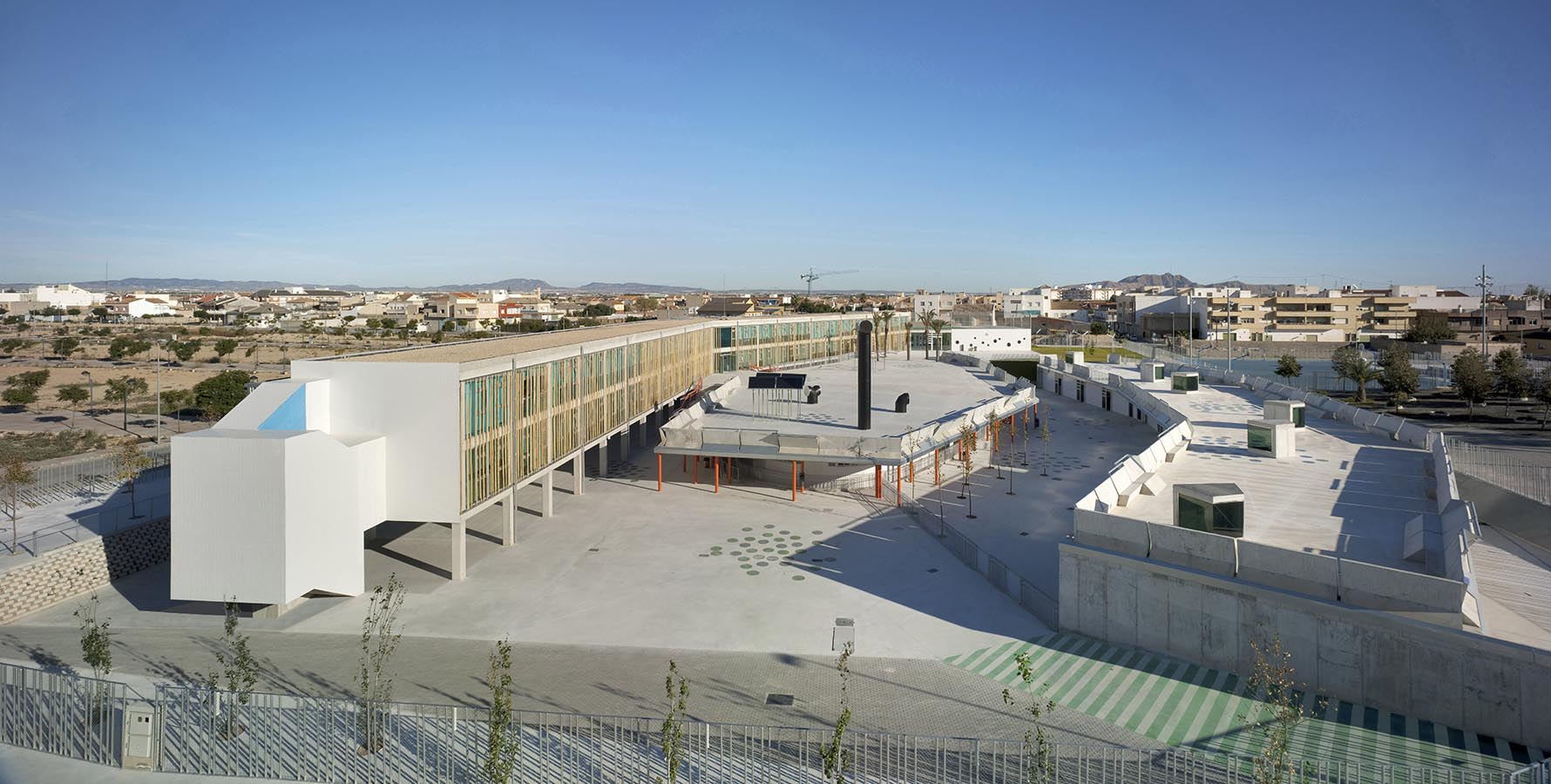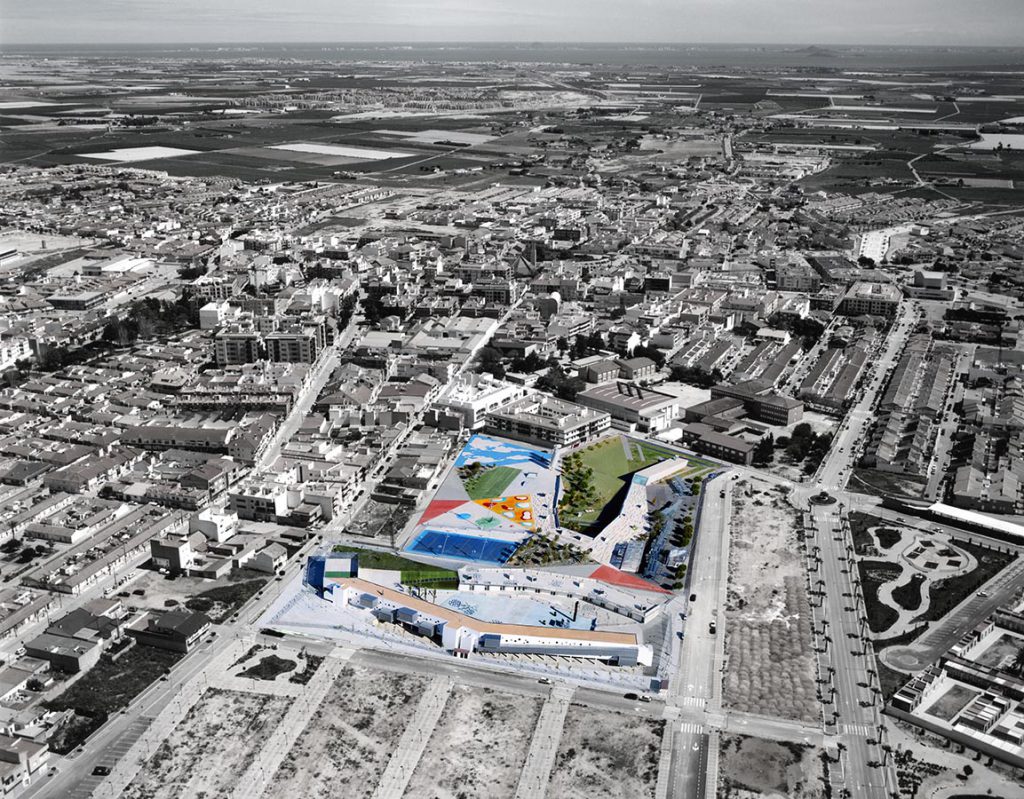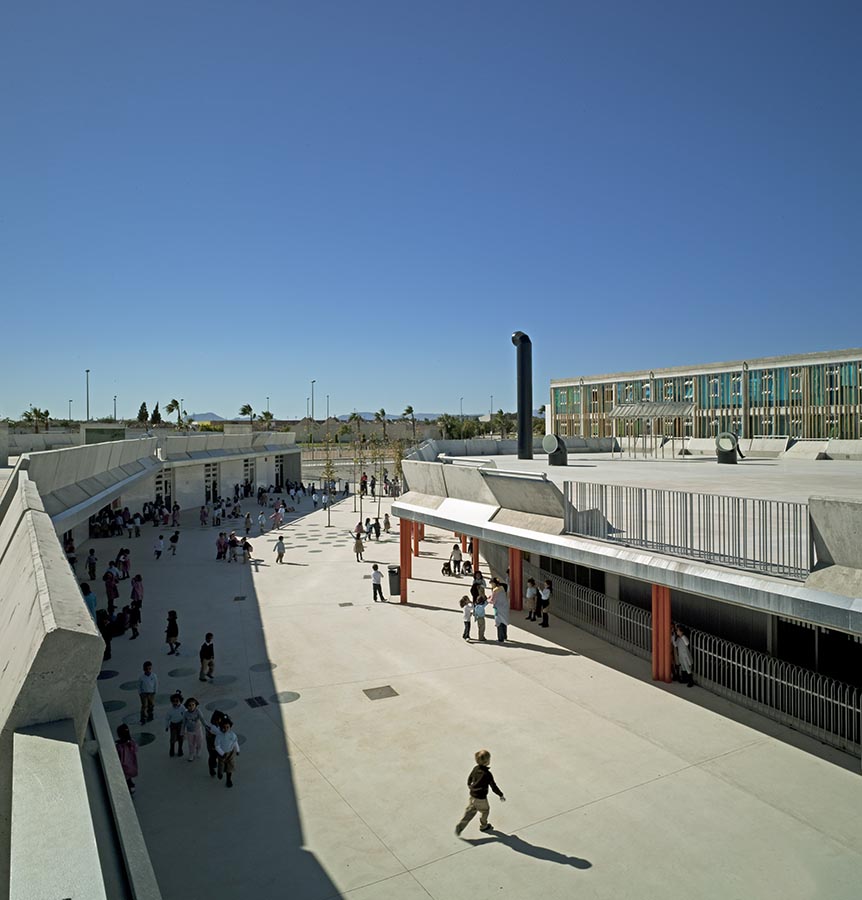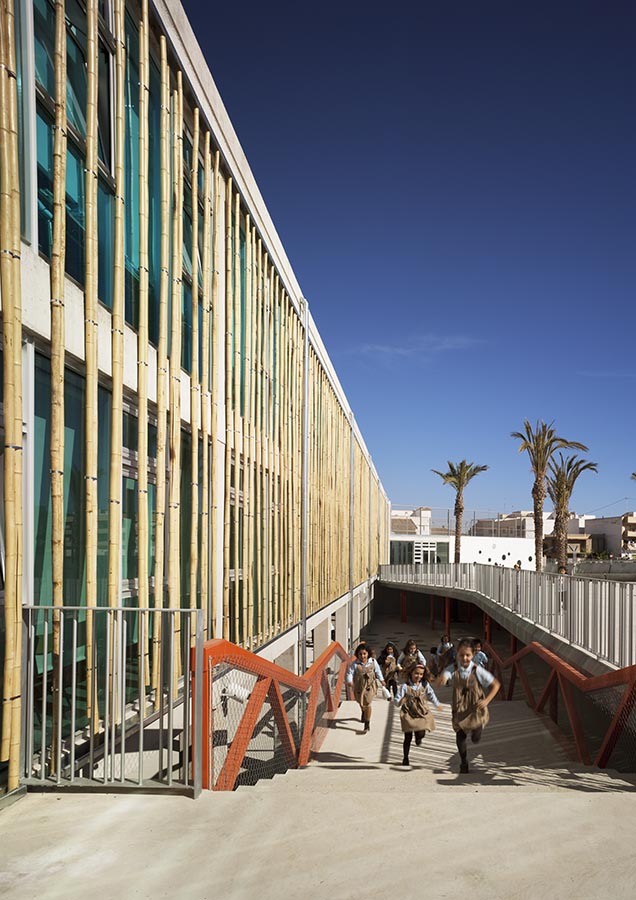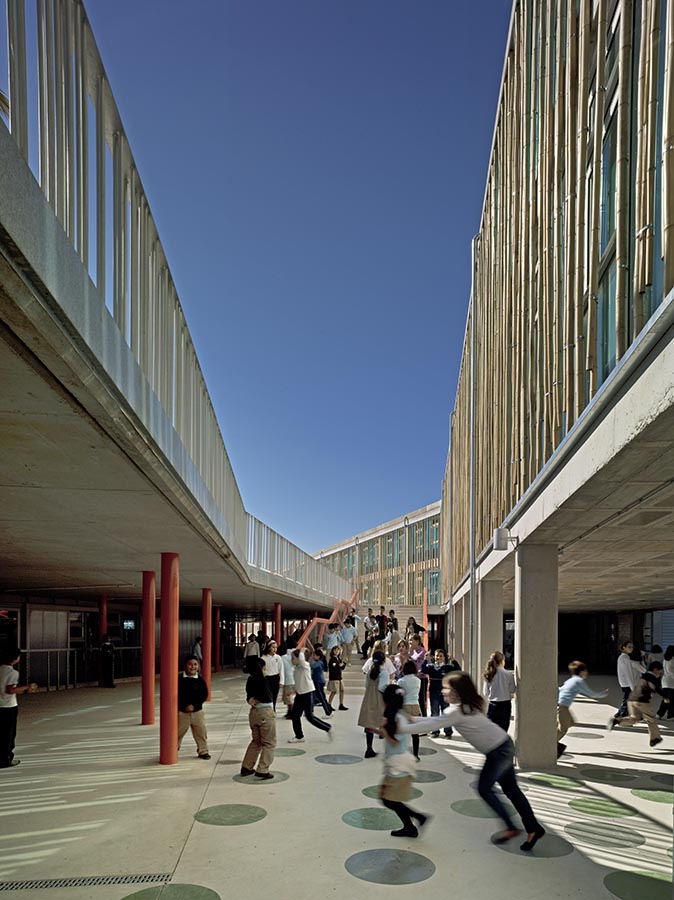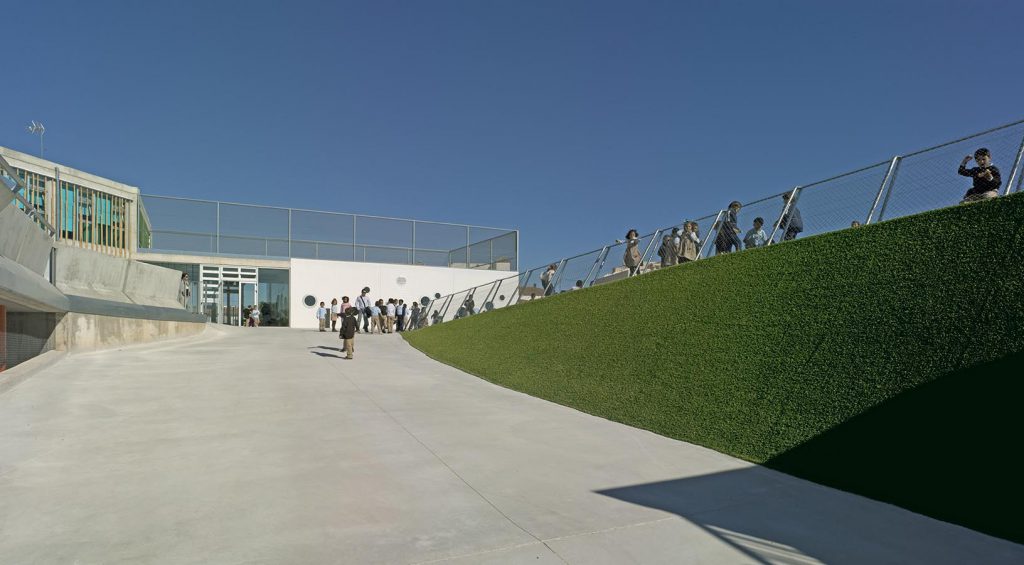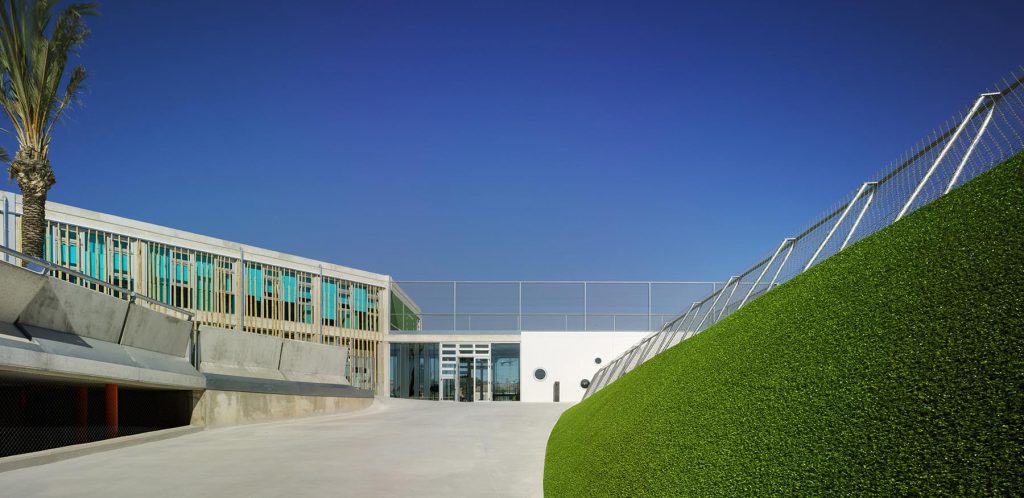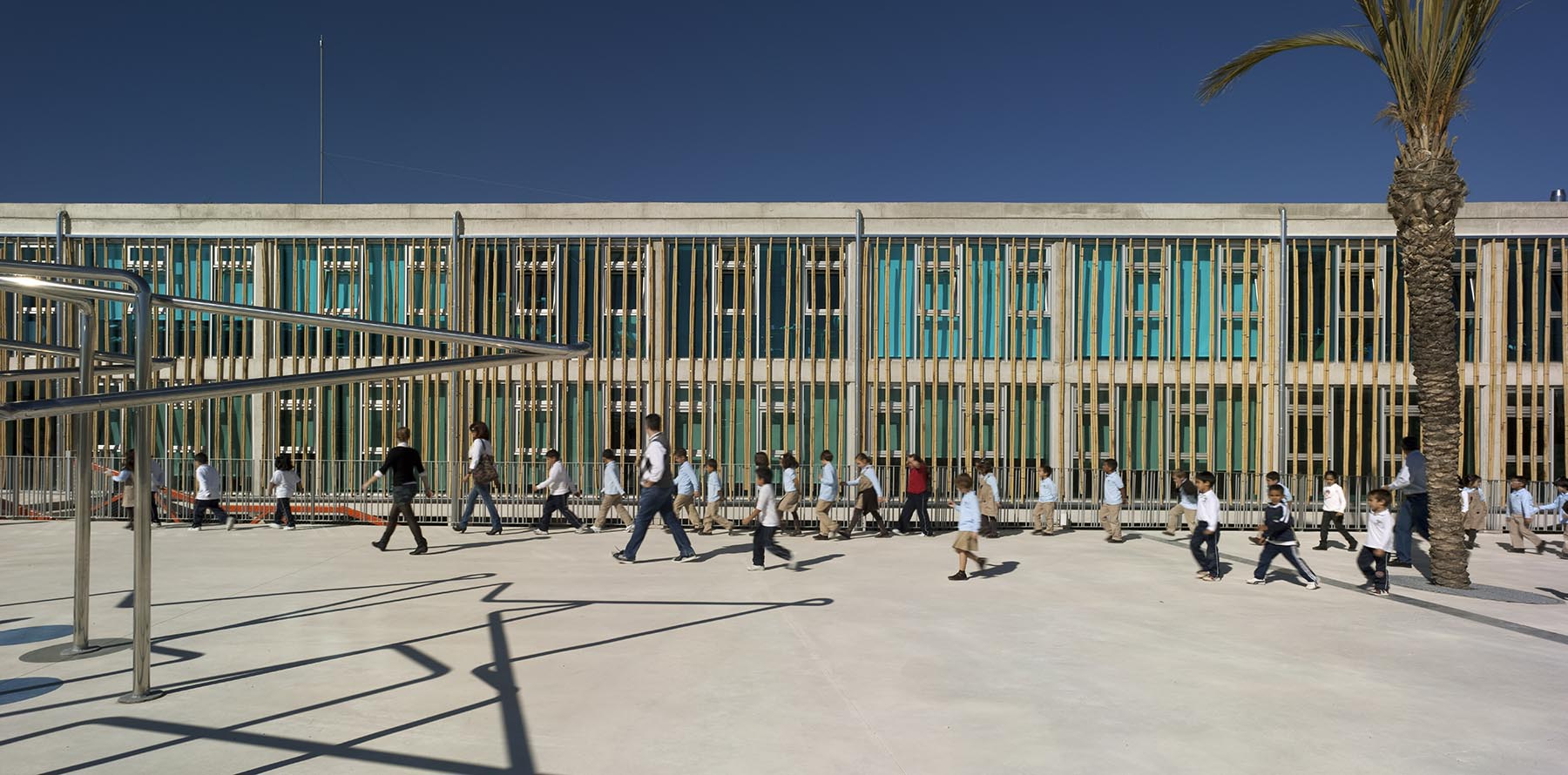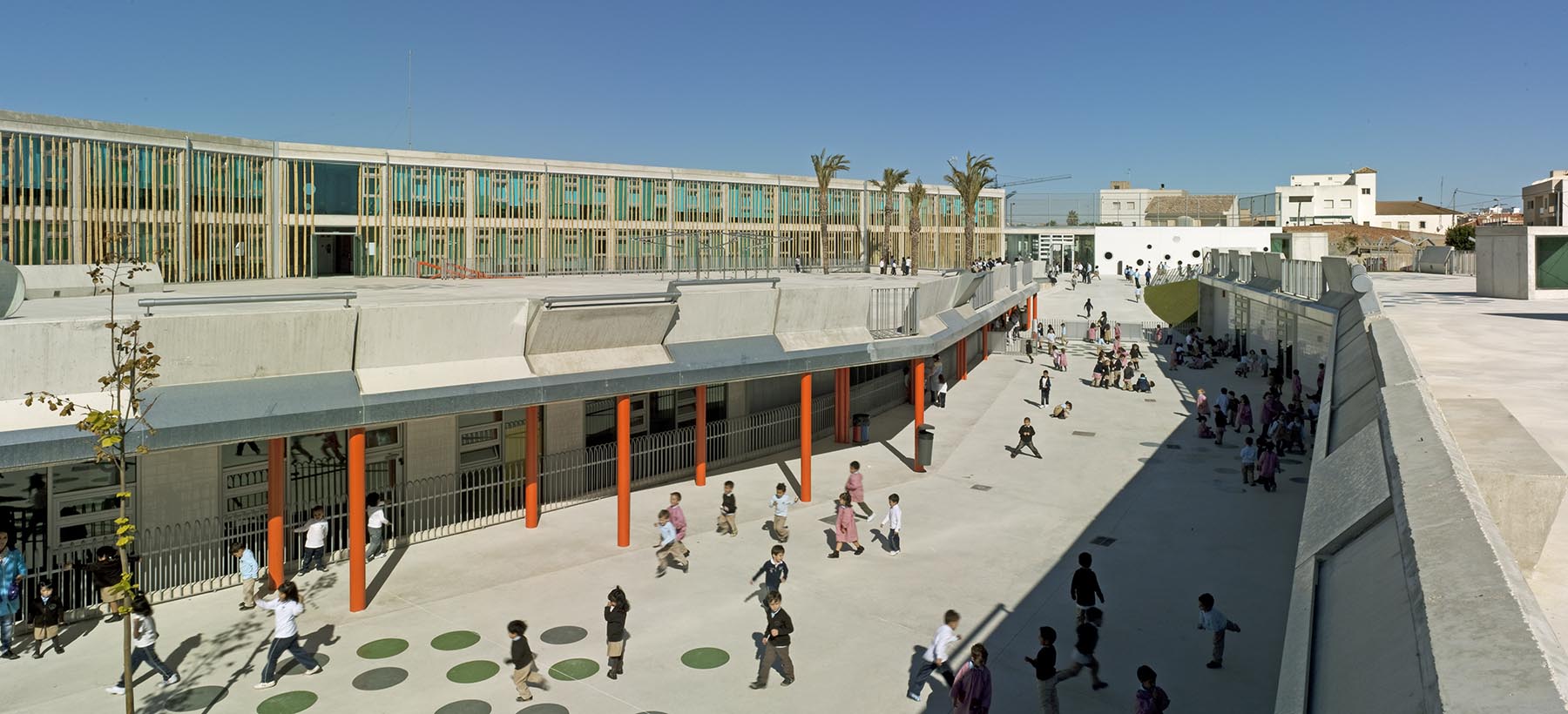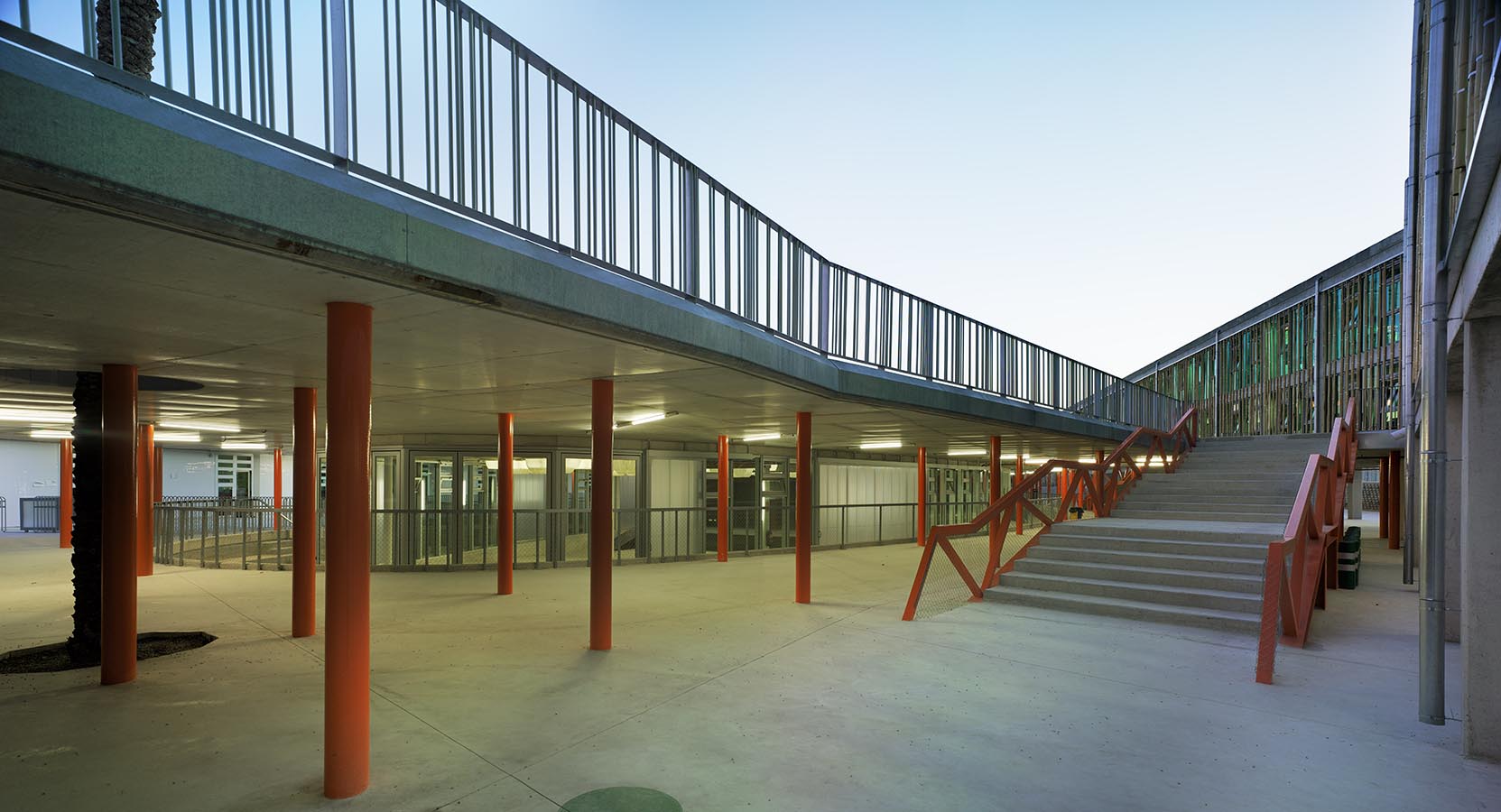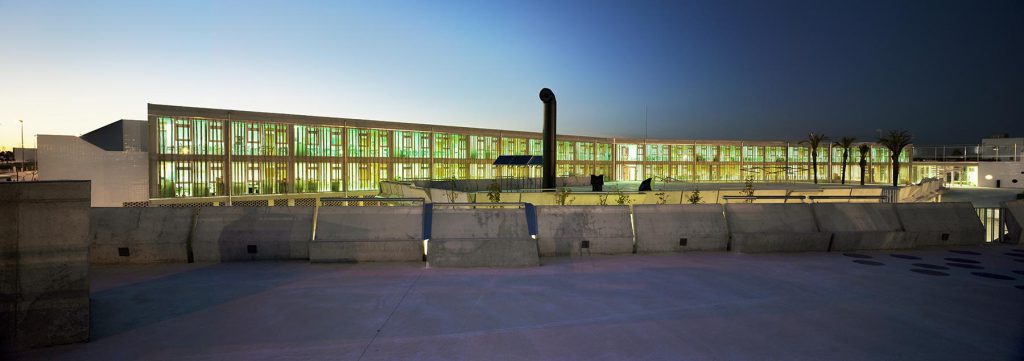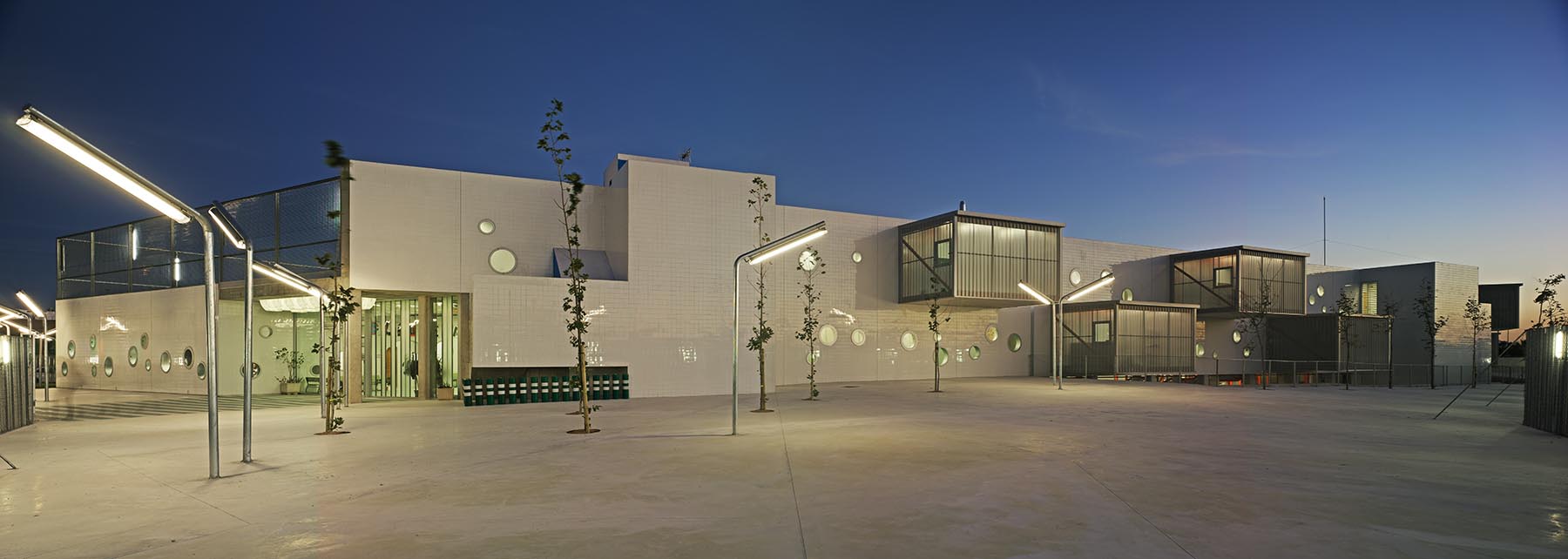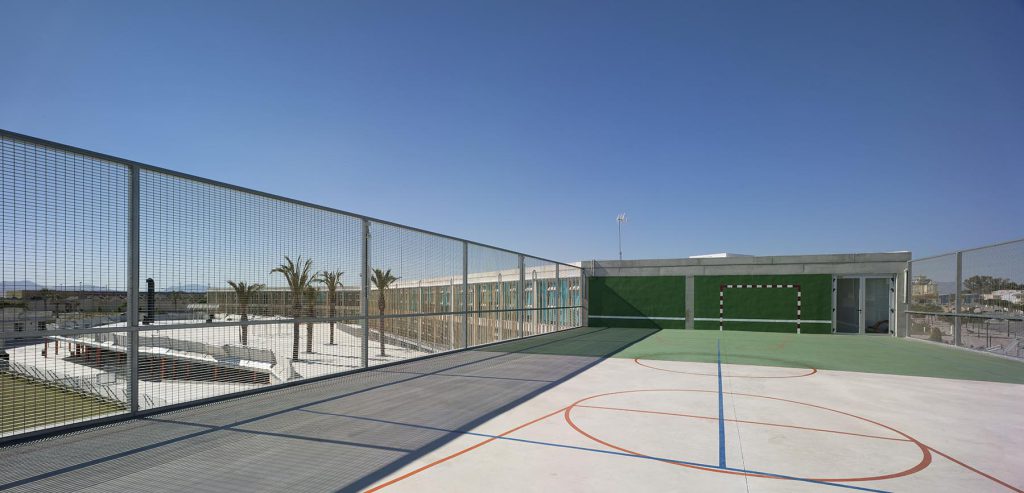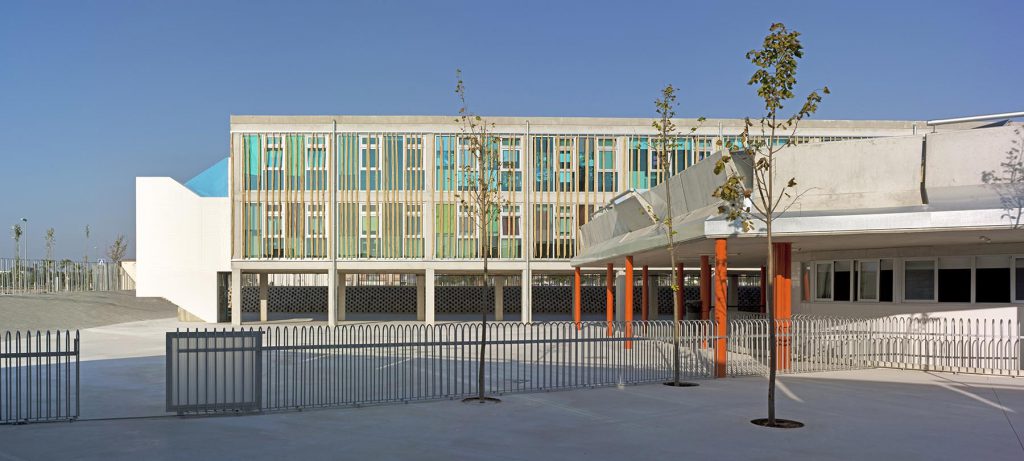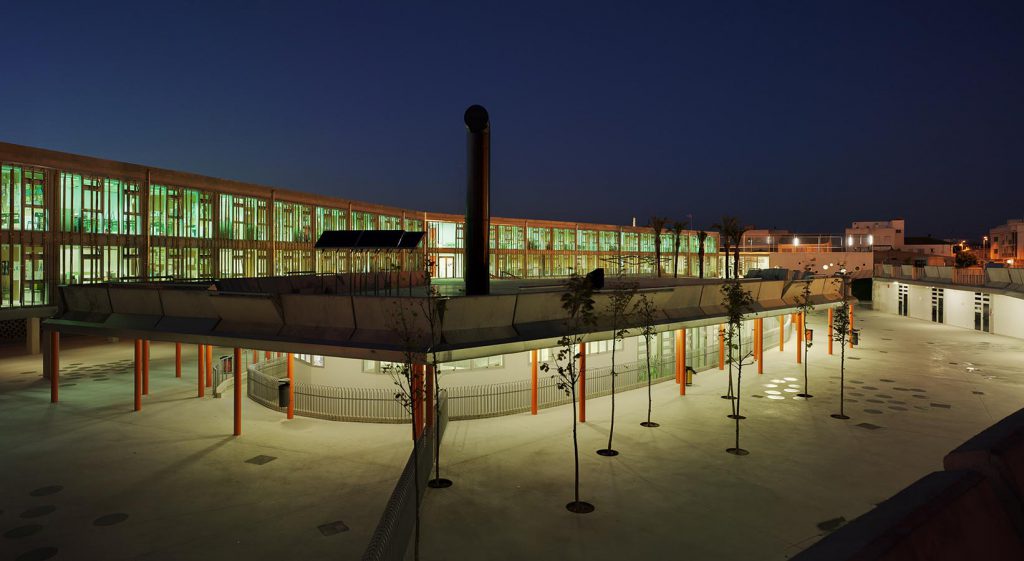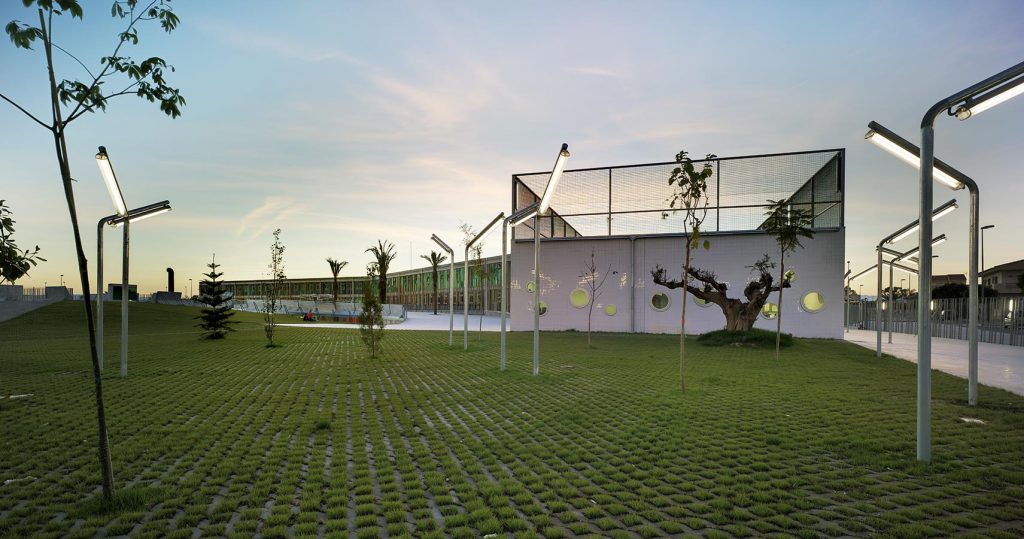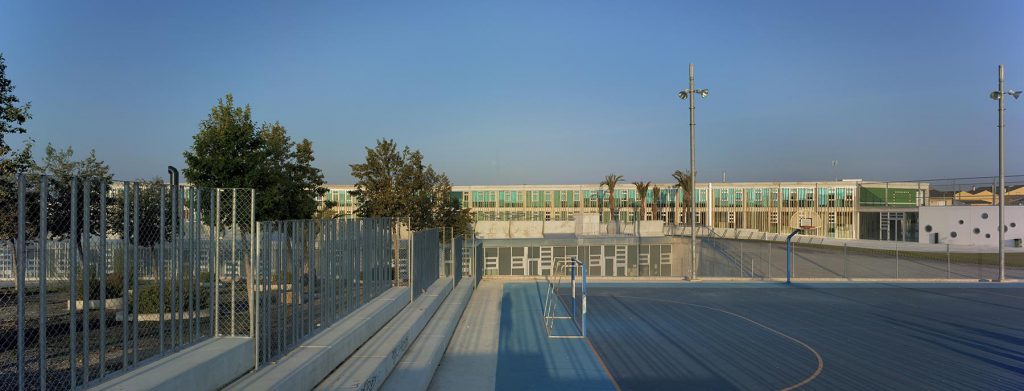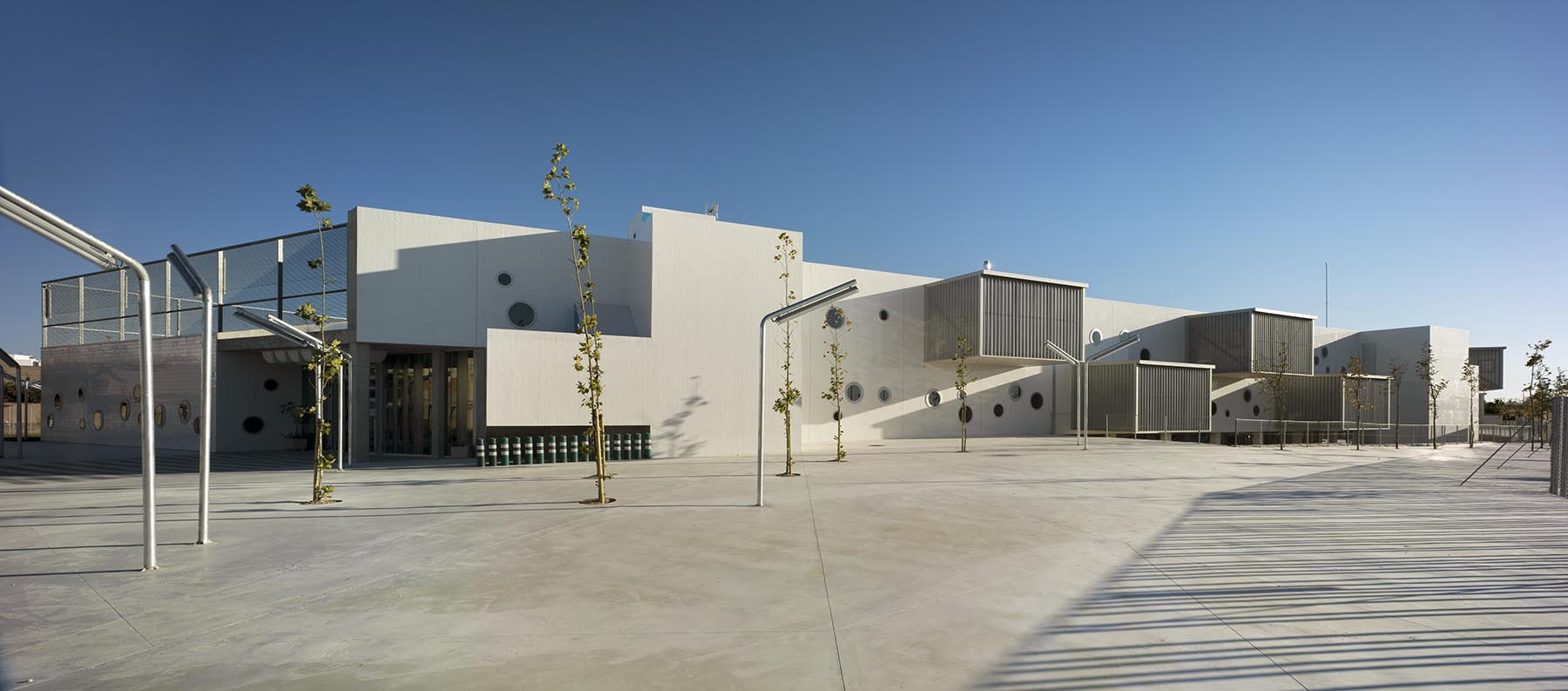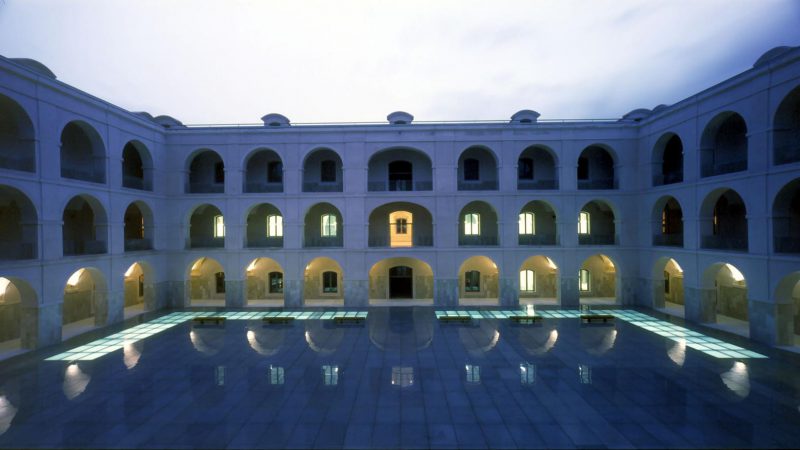The land on which the School sits is in a new area of strategic growth in the city, in an area with public educational and cultural infrastructures: a library, high school and sports facility.
The project arises from a unique comprehensive idea for dealing with the entire block by creating a new topography to act as a reference point in this expanding zone of Torre Pacheco; a new urban, cultural and leisure area for residents, where the public space – characterized by the folding terrain and the integration of diverse uses – contains and protects the buildings.
The school is a parenthesis in the city, a parenthesis of services, education and leisure in which children face their daily visits in an attractive, safe and, above all, different manner. It is designed as a kind of jack-in-the-box, to collect fantasies and imagination, knowledge, dreams and color, where everything has numerous possibilities and uses: we can walk on a roof or along a wall, go to the greenhouse, to the herb garden, perhaps gym class is on the sports field today, or we are going to play basketball up on top…
The project attempts to resolve the list of requirements set forth in a simple, orderly and practical manner, integrating the building construction into the surrounding plot assigned to it, so that the architectural relationships between the buildings themselves create the courtyards and different blocks.
Thus the center is resolved by means of several components separated on the basis of the requirements, arranged on different levels according to their uses. The pre-school building is on the lowest floor, with a separate courtyard, and the primary school building on the first and second floors, creating a large porch linked to the courtyard on the ground floor.
The main entrance to the school has a pick-up area, where vehicles – cars and buses – have the space needed to drop children off under the general entry porch. This plaza has an entrance and an exit, in order to avoid slowing the traffic on the streets and make it safer for the children to enter the school.
Through the main lobby, it is possible to access the different components that make up the general areas of the complex: administration, pre-school, primary school and shared services.
The pre-school children enter their classrooms from a ramp that slopes gently downwards, opening onto their private courtyard and connecting with the shared infrastructures zone (auditorium, cafeteria, kitchen, resting areas and general storage area).
The new topography shelters the pre-school and shared infrastructures in the most protected part, coinciding with the reference elevation (elevation +- 0.00) of the block, establishing direct relationships with the library and reading park.
The primary school children go through the lobby to their courtyard, where they line up before entering class.
The central position of this courtyard makes it an outdoor activities area, which coincides with the upper floor, the roof, of the auditorium.
The primary school and administration component are located at street level.
The folds of the property at this level generate numerous areas of expansion for the school, which connect to the Library’s Reading Park.

